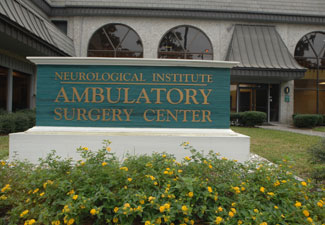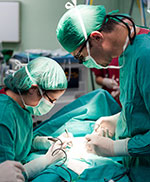![]()
Minimally Invasive Spine Surgery
Facts
The overall goal of spine treatment should be to get at the root of the problem, causing the least amount of disruption to the patient’s lifestyle. Spine surgery is typically a choice of last resort, after all nonsurgical methods have been exhausted, or when problems such as severely herniated discs or damaged vertebrae simply will not respond to nonsurgical treatments.
Overview
New developments in minimally invasive techniques have introduced improved ways the surgeon can access the spine, making the recovery process smoother and easier. These techniques are expected to eventually replace conventional surgical approaches.

Traditional, “open” spine surgery can involve a three-inch long incision, in which muscles and tissues are separated for optimal access to the injury site. Due to the resulting trauma to surrounding tissues and the amount of blood loss involved, a several-week recovery period may be required for the affected tissues and muscles to heal.
Minimally invasive surgical techniques provide the opportunity to successfully treat back problems with minimal interruption to the patient’s regular, active lifestyle. Results achieved from these methods have been proven to match that of conventional “open surgery.” The surgeon makes smaller incisions, sometimes only a half-inch in length. Through these tiny incisions, the surgeon inserts special surgical instruments and probes in order to access the damaged disc in the spine.
Benefits
- Less recovery time
- Less post-operative pain
- Less blood loss
- Less damage to tissues and muscles
- Smaller scars
- Quicker return to activity
[top]







